Friday, September 29, 2003 is a night that will go down in rock and roll concert history. U2 premiered their new show, U2:UV Achtung Baby Live as the debut event at the long-awaited opening of the giant Sphere that has added a massive video experience to the Las Vegas skyline. A contender for one of the best concert designs of all time? U2 was already on the list with design-worthy tours ranging from Zoo TV to PopMart and the 360° tour with the famous "claw set" designed by U2 production designer Willie Williams, with the late Mark Fisher of Stufish as the architect.
“Mark Fisher’s first tour with U2 was Zoo TV in 1992,” says architect Ric Lipson, who has been with Stufish since 2006, as a partner in the firm that continues Fisher's legacy with U2 which included the PopMart, Elevation, Vertigo, and 360° tours. Stufish V2, post-Fisher, continued its collaboration with Williams and U2 for the Innocence + Experience tour, the Joshua Tree tours, Experience + Innocence tour, Bono’s Stories Of Surrender book tour, and now U2:UV Achtung Baby Live in Las Vegas.
“We started on this project about 18 months ago, and spent a year developing ideas on the show, asking what it could look like,” explains Lipson. “We didn’t know the rules as it was a new venue that wasn’t completed yet.” As he notes, there is a proscenium stage area, a 100’ x 50’ “hole” behind where the current backstage technical areas are located. “It can be opened as a stage with flying ability, so we wondered if the stage should be inside that area, but it didn’t feel immersive, so we didn’t want to do that. Then we explored other initial ideas such as catwalks, multiple stages, or a stage that could move up and down…”
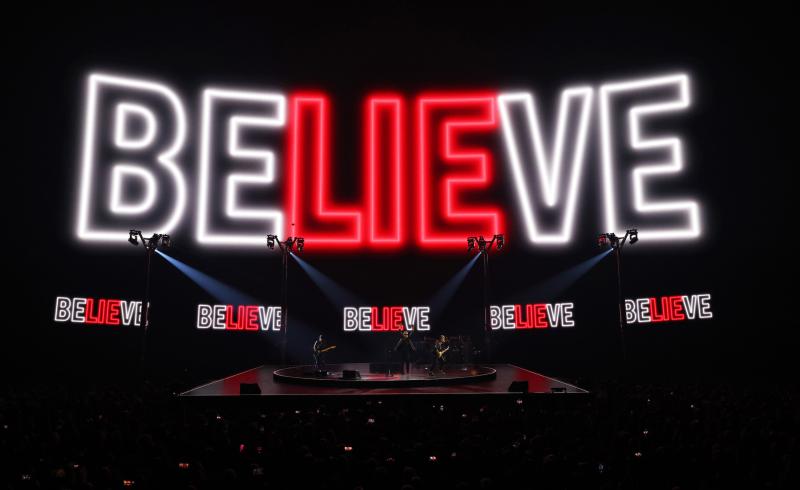
For the scale of the sphere screen, Lipson points out that a screen like the one Beyoncé had at 45’ high x 180’ wide would fit more than 12 times in the Sphere, which measures more like 350’ wide x 250’ to top of the peak. “You can’t really understand the scale until you are in there,” he notes, adding that they “finally decided that the staging should not to try compete with the scale of the room.” U2’s Bono owns one of the Brian Eno illuminated turntables (created in 2021) that undulates with changing colors, which became the inspiration for the stage. “We decided to present the band on a stage sized version of that turntable, as a nod to vinyl but also to treat the stage as an art piece, as a sculpture,” says Lipson, “and collaborate with artists to create video art for the immersive LED screen.”
The stage is thus a 30’ circle i.e.: the turntable, sitting on a 46’ square, with a custom video screen covering the stage floor. It appears to float with a 4' LED surface around the edge made from Roe Vanish Video. Loudspeakers are placed under the stage, that can emit sound through the video side screens. “We gave the stage a two-degree rake to give it a visual energy from the sphere video wall, and it is only 6’ high at the front so the audience on the floor or in the close seats can see the band really well,” notes Lipson. “The backline techs can be in the space at the back edge of the stage which ramps up to 7’6”. It’s appearance is very pure and very simple, with a lift at the front and robotic cameras along the front and sides of the stage.
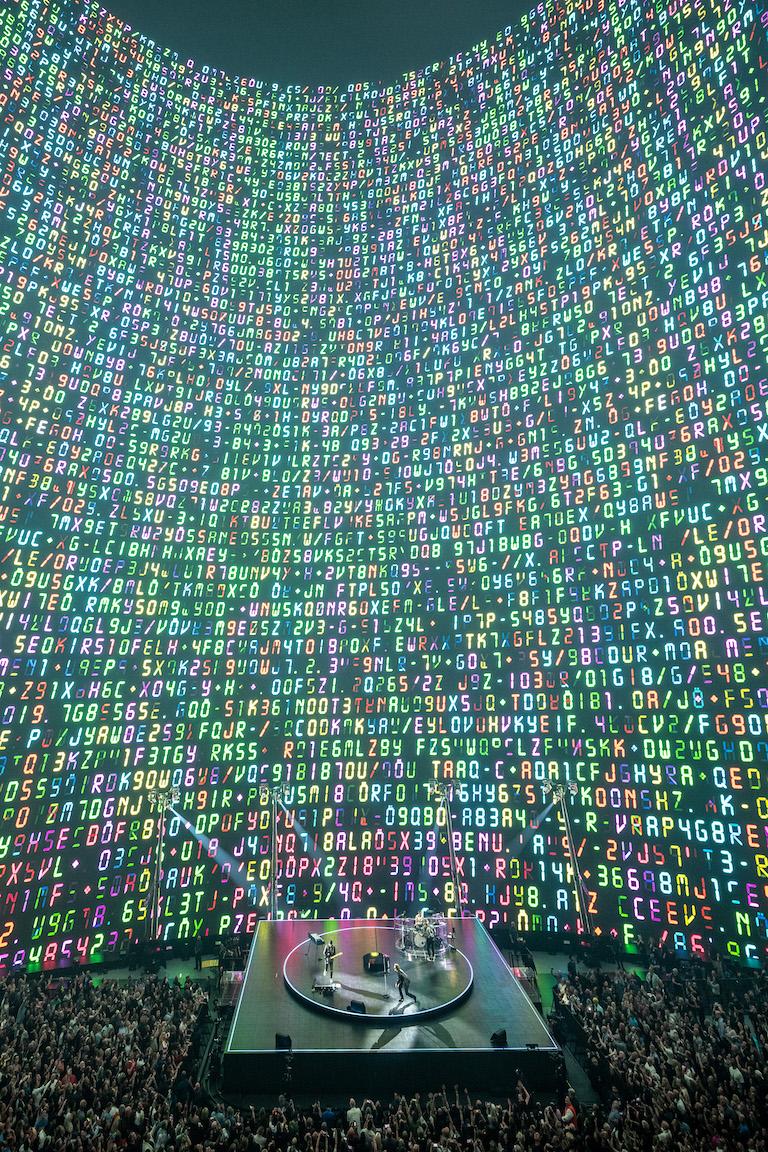
The hero of the show is the Sphere video screen made from 8mm blow through video screen by SACO Technologies. Many different size video tiles were used to create the sphere-shaped immersive screen.It’s the biggest element by far, and most of the 1800 Holoplot time-aligned loudspeakers are behind it. There are additional speakers under the stage for the floor audience to fill the sound and help with the time-delay from the main speakers.”
“It’s not a big sculptural set like Stufish usually creates, none of the usual U2 tropes with levels or bunkers. There are beautiful CGI images directed by Willie and produced by Treatment Studios, as well as video art by Es Devlin, Industrial Light and Magic, John Gerrard, Marco Brambilla, and other artists, allowing the audience to look into different world. Towards the end of the show you see Las Vegas, then the desert, then flooding the desert and the animals return. It’s very well-executed,” says Lipson. A system of 23 disguise media servers runs the show: one of the challenges was getting them to all run together.
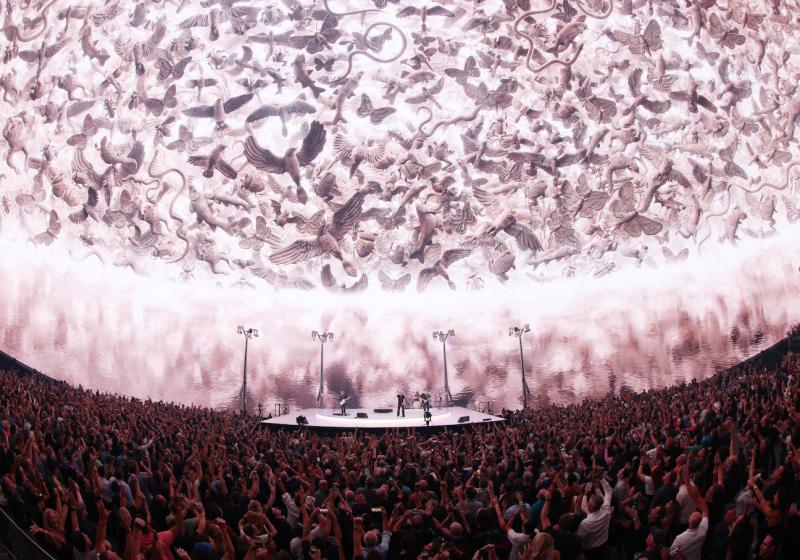
“We worked with a smaller version of the Sphere in Burbank, where we played with images—to see what might make you dizzy, what you can visually handle,” Lipson explains. “Willie asked at one point to see it all in blue, a solid color, bathed in light, to make the space all one color. The stage—a double-level deck with custom legs built by Tait and covered with circular custom, high-resolution 2.3mm FUSE LED tiles. There are also custom video tiles on the edges of the record player and the square deck. Throughout the show the content evolves from premade content to solid color emulating the Brian Eno record player Which is programmed by a modified version of the algorithm that make the colors change in the real record player.
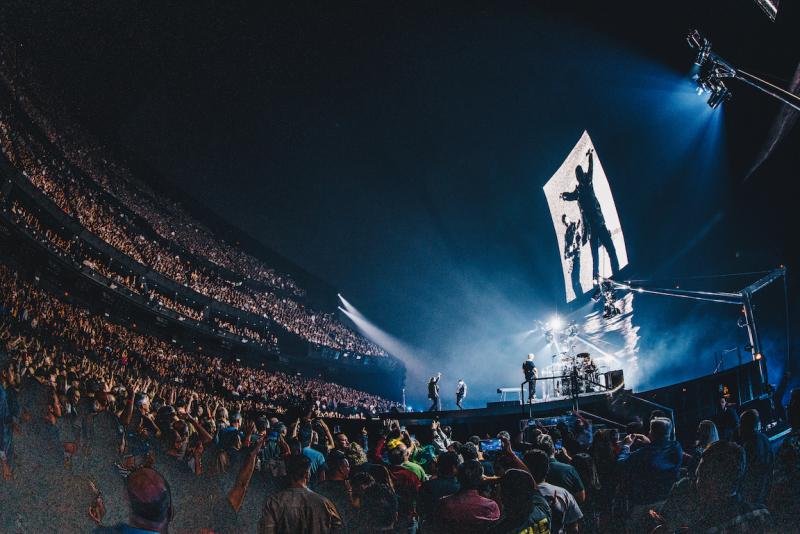
To light the band on the stage, each of four articulated lampposts with a chrome finish supports eight Robe Forte fixtures and four Robe RoboSpot Controllers as followspots. "We designed these with Willie to be as stealth as possible but also we felt it important that they would have some way to move. To feel like they had a personality," says Lipson. "We wanted to make sure they didn't end up as a black solid silhouette against the screen and so I wanted to make the posts and the lighting on them chrome to help reflect the color and imagery of the screen. We worked with Y-Lines in Belgium to make and automate these."
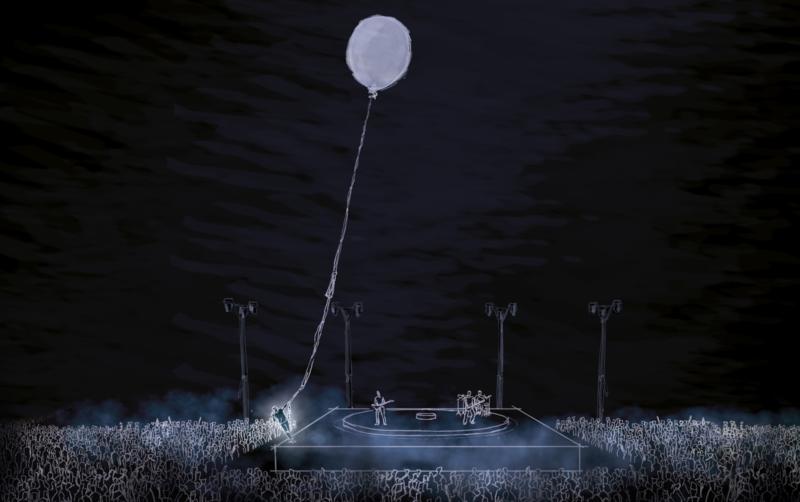
One of the visual images comprises a long rope made of bedsheets pulled though a 1’ x 3’ hatch in the screen, where a balloon is drawn, with the sheets as the string of the balloon. “A physical way to connect the screen and the stage,” Lipson points out, noting that the layout of the stage and screen did not cause any sightline issues: "We just wanted to make sure the band didn’t look too small in comparison to the screen. The stage actually acts as the connective tissue between the imagery on the sphere surface, the band and the audience. Luckily we had a long period of time to explore ideas which paid off .”
Credits:
Stage design: Stufish Entertainment Architects
Stage construction: TAIT
Screen: FUSE
Lighting lampposts: Y-Lines, Belgium
Barrier: EPS
Additional scenic elements: SRS Fabrication and Electric Sky
Drum riser and clear Plexi: SRS
Turntable in the middle: All Access, with LED strips by Electric Sky
Softgoods: Rosebrand
Creative Credits:
Creative Director Willie Williams
Set Designer STUFISH
Executive Director and Band Consultant Gavin Friday
Creative Consultant/Video Artist Es Devlin
Creative Consultant and Choreographer Morleigh Steinberg
Creative Consultant, Stylist, Head of Wardrobe Sharon Blankson
Sound Design Joe O’Herlihy
Video Live Director Stefaan “Smasher” Desmedt
Sound Consultants Steve Lillywhite, Jacknife Lee Live
Content Producer Treatment Studio
Video Artists John Gerrard, Marco Brambilla, Industrial Light and Magic
Production Manager Jake Berry
Associate Director Mike Smith
Tour Director Ciaran Flaherty
Tour Producer/Promoter Arthur Fogel for Live Nation Management
Principle Management, Full Stop Management